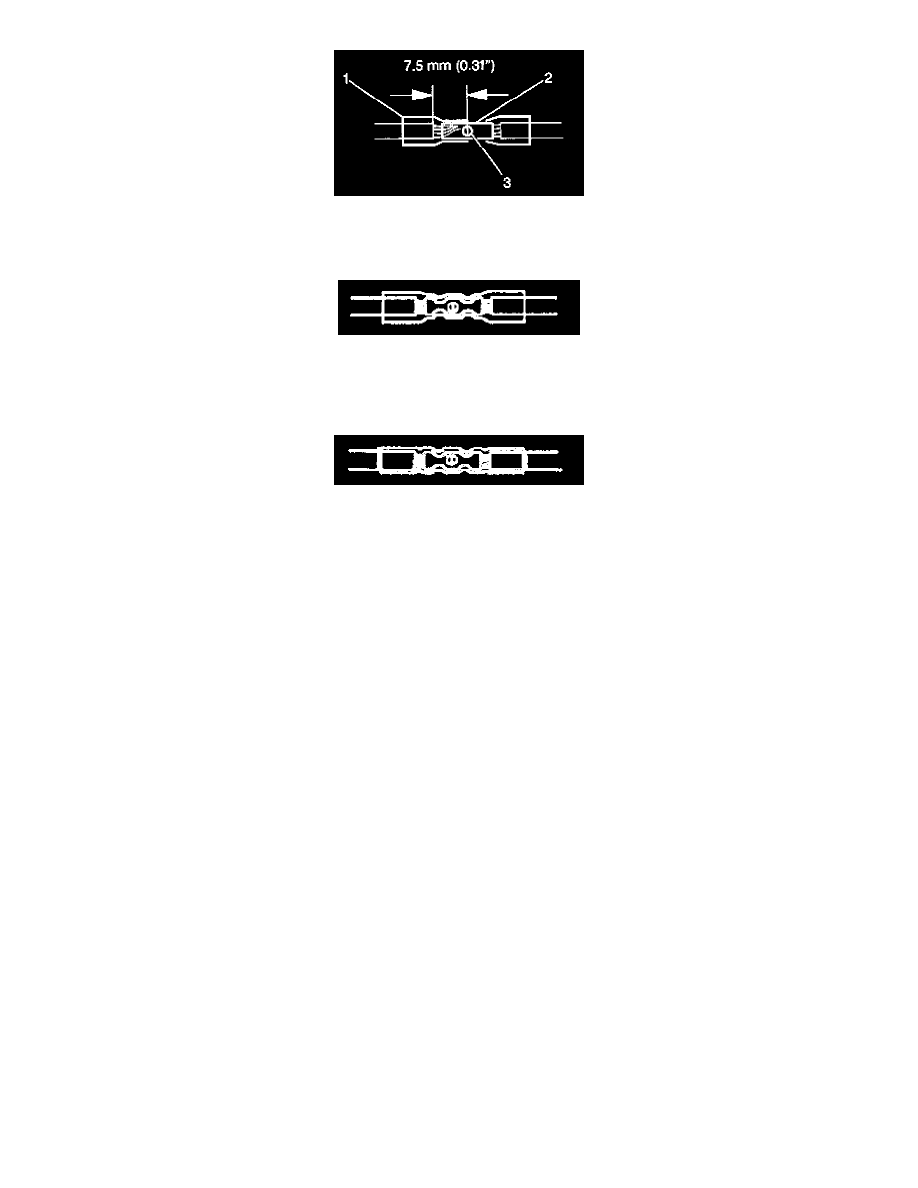Lumina V6-3.1L VIN J (2000)

6. Place the splice sleeve in the nest. Ensure that the crimp falls midway between the end of the barrel and the stop. The sleeve has a stop (3) in the
middle of the barrel (2) in order to prevent the wire (1) from going further. Close the hand crimper handles slightly in order to firmly hold the
splice sleeve in the proper nest.
7. Insert the wire into the splice sleeve barrel until the wire hits the barrel stop.
8. Tightly close the handles of the crimp tool until the crimper handles open when released.
The crimper handles will not open until you apply the proper amount of pressure to the splice sleeve. Repeat steps 4 and 5 for the opposite end of
the splice.
9. Using the heat torch, apply heat to the crimped area of the barrel.
10. Gradually move the heat barrel to the open end of the tubing:
^
The tubing will shrink completely as the heat is moved along the insulation.
^
A small amount of sealant will come out of the end of the tubing when sufficient shrinkage is achieved.
Splicing Copper Wire Using Splice Clips
TOOLS REQUIRED
J 38125-8 Terminal Repair kit
1. Open the harness.
^
If the harness is taped, remove the tape.
^
To avoid wiring insulation damage, use a sewing ripper in order to cut open the harness.
^
If the harness has a black plastic conduit, pull out the desired wire.
2. Cut the wire.
^
Cut as little wire off the harness as possible.
^
Ensure that each splice is at least 40 mm (1.5 in) away from other splices, harness branches and connectors. This helps prevent moisture from
bridging adjacent splices and causing damage.
3. Select the proper size and type of wire.
^
The wire must be of equal or greater size than the original (except fusible link).
^
The wire's insulation must have the same or higher temperature rating.
-
Use general purpose insulation for areas that are not subject to high temperatures.
-
Use a cross-linked polyethylene insulated wire for areas where high temperatures are expected.
IMPORTANT: Use Cross-linked polyethylene wire to replace PVC, but do not replace cross-linked polyethylene with PVC.
Cross-linked polyethylene wire is not fuel resistant. Do not use to replace wire where there is the possibility of fuel contact.
4. Strip the insulation.
^
Select the correct size opening in the wire stripper or work down from the largest size.
^
Strip approximately 7.5 mm (5/16 in) of insulation from each wire to be spliced.
5. Select the proper clip to secure the splice. Follow the instructions in the J 38125-B Terminal Repair kit in order to determine the proper clip size
crimp tool and anvil.
6. Overlap the two stripped wire ends and hold them between thumb and forefinger.
